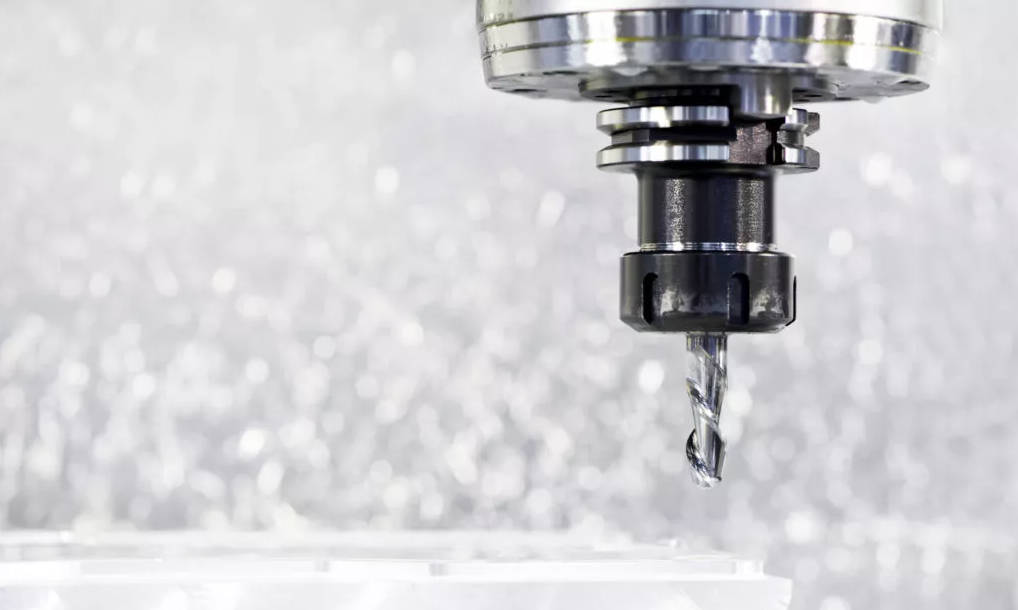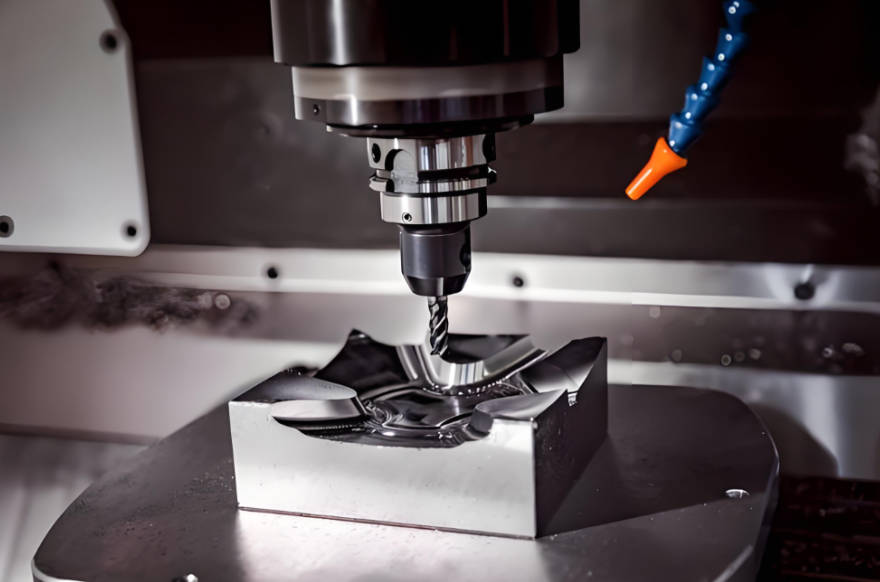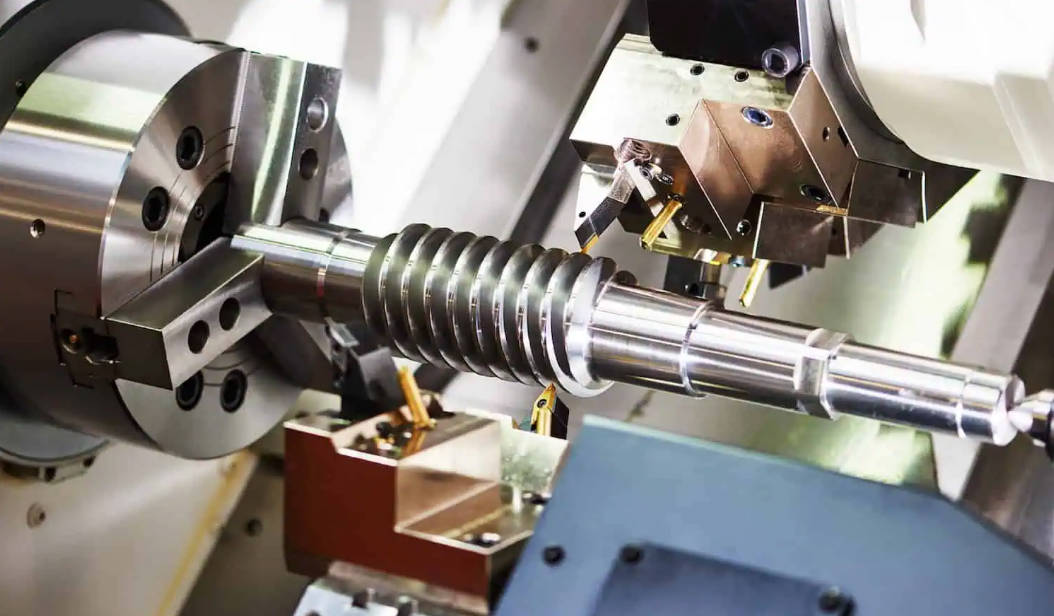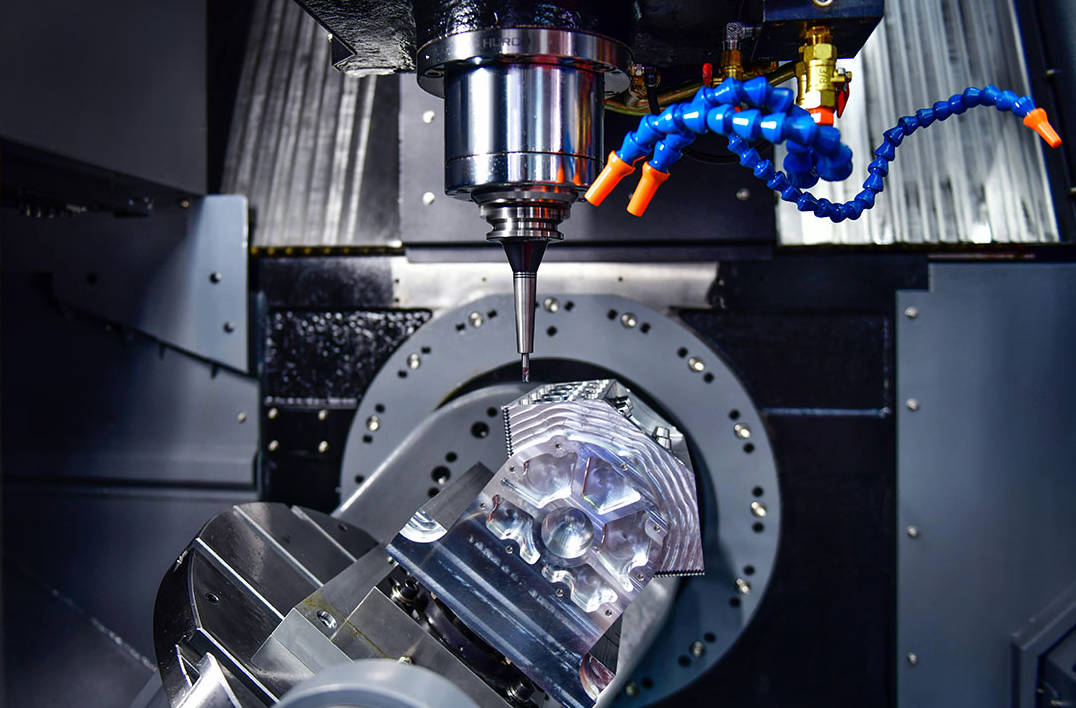Table of Contents
- 1. Introduction
- 2. Overview of CNC Milling and Material Considerations
- 3. Material Comparisons
- 4. Key Considerations for Choosing a Material
- 5. Addressing Common User Questions (FAQ)
- 6. Practical Tips for CNC Milling Service Users
- 7. Conclusion
1. Introduction
In the landscape of modern manufacturing, CNC (Computer Numerical Control) milling stands as a cornerstone technology, enabling the creation of precise, complex, and high-quality parts from a solid block of material. Its importance cannot be overstated, touching everything from the aerospace and automotive industries to medical devices and consumer electronics. The process, which uses computer-controlled machines to selectively remove material, is celebrated for its accuracy, repeatability, and versatility. However, the success of any CNC milling project hinges on one critical decision: the choice of material.
The purpose of this comprehensive guide is to navigate the intricate world of CNC milling materials. We aim to provide engineers, designers, and procurement managers with the essential knowledge to select the best material for their specific needs. Choosing the right material is not merely a technical detail; it is a strategic decision that profoundly impacts the final product’s performance, cost, and manufacturing timeline.
We understand the common concerns that arise during this selection process. Questions about material durability, overall project cost, machinability, and application suitability are paramount. Is the lightweight nature of aluminum sufficient for a load-bearing part? Is the immense strength of steel worth the increased machining time and cost? When does the high performance of titanium justify its premium price tag? And where do versatile plastics fit into this equation? This article will address these questions head-on, providing a detailed comparison of four of the most common material categories used in CNC milling: aluminum, steel, titanium, and plastics. By understanding their unique properties, advantages, and disadvantages, you can make an informed decision that aligns with your project goals, budget, and performance requirements.

2. Overview of CNC Milling and Material Considerations
To fully appreciate the importance of material selection, it’s essential to understand the fundamentals of the CNC milling process. CNC milling is a subtractive manufacturing method where a rotating multi-point cutting tool is advanced into a stationary workpiece. The machine’s movements are dictated by a computer program, allowing for the creation of intricate shapes and features with incredibly high precision. The tool cuts away at the material, chip by chip, until the final desired geometry is achieved.
This intimate interaction between the cutting tool and the workpiece is why material properties are so critical. The material doesn’t just define the final part’s characteristics; it dictates the entire manufacturing journey. A material that is too hard can cause rapid tool wear and require slow, expensive machining operations. A material that is too soft might “gum up” the cutting tool, leading to a poor surface finish. Therefore, a successful CNC milling project requires a harmonious balance between the desired part properties and the material’s behavior on the machine.
Key Factors in Material Selection
When evaluating materials for your CNC project, several key factors must be weighed. These interconnected properties determine not only the feasibility of manufacturing but also the performance and cost-effectiveness of the final product.
- Strength and Durability: This is often the primary consideration. It encompasses several metrics, including tensile strength (resistance to being pulled apart), yield strength (the point at which it begins to deform permanently), and hardness (resistance to surface indentation). The required strength is entirely dependent on the application. A structural component in an aircraft will have far more demanding strength requirements than the housing for a consumer electronic device.
- Machinability and Tool Wear: Machinability is a term that describes how easily a material can be cut, drilled, or shaped. Excellent machinability translates to faster cutting speeds, longer tool life, better surface finishes, and lower manufacturing costs. Materials like aluminum and certain plastics are known for their high machinability. In contrast, hard materials like stainless steel and titanium are notoriously difficult to machine, leading to increased tool wear, longer cycle times, and consequently, higher costs.
- Cost and Availability: The raw cost of the material is a significant factor in the overall project budget. Plastics are generally the most affordable, followed by aluminum and common steel alloys. Titanium sits at the premium end of the spectrum. However, raw material cost is only part of the story. You must also consider the cost of machining. An inexpensive but difficult-to-machine material might end up costing more to produce than a more expensive but easily machined alternative. Availability can also impact lead times and costs, especially for more exotic alloys.
- Application-Specific Requirements: Beyond the general properties, many applications have unique demands. These can include:
- Corrosion Resistance: For parts exposed to moisture, chemicals, or harsh environments (e.g., marine or medical applications), materials like stainless steel, titanium, and most plastics are superior to plain carbon steel.
- Weight: In industries like aerospace and automotive, minimizing weight is critical. This is where materials with a high strength-to-weight ratio, such as aluminum and titanium, excel.
- Thermal Properties: Some applications require good thermal conductivity (e.g., heat sinks, for which aluminum is ideal), while others need thermal insulation (e.g., electronic housings, where plastics are suitable).
- Biocompatibility: For medical implants and surgical tools, the material must be non-toxic and not cause adverse reactions in the human body. Titanium and certain medical-grade plastics like PEEK are the primary choices here.

3. Material Comparisons
Choosing the perfect material is a balancing act. To help you navigate this decision, we’ll now take a deep dive into the properties, pros, cons, and ideal applications for aluminum, steel, titanium, and plastics.
Here is a comparative overview table to provide a quick reference:
| Feature | Aluminum | Steel | Titanium | Plastics |
|---|---|---|---|---|
| Strength-to-Weight Ratio | High | Medium to High | Very High | Low |
| Absolute Strength | Medium | High to Very High | Very High | Low |
| Machinability | Excellent | Fair to Poor | Poor | Excellent |
| Cost (Material & Machining) | Low to Medium | Medium | Very High | Very Low |
| Corrosion Resistance | Good to Excellent | Poor to Excellent | Excellent | Excellent |
| Density (g/cm³) | ~2.7 | ~7.85 | ~4.5 | ~1.0-2.2 |
| Common Grades/Types | 6061, 7075 | 304 Stainless, 1018 Mild, 4140 Alloy | Grade 2, Grade 5 (Ti-6Al-4V) | ABS, Nylon, PEEK, Polycarbonate |
3.1 Aluminum
Aluminum is one of the most popular materials in CNC milling, and for good reason. It strikes an exceptional balance between performance, cost, and manufacturability, making it a go-to choice for a vast array of applications, from rapid prototyping to end-use production parts.
Properties:
Aluminum’s defining characteristics are its low density and excellent corrosion resistance. It is approximately one-third the weight of steel, making it an ideal candidate for applications where weight reduction is a priority. This corrosion resistance is due to a thin, tough, and transparent layer of aluminum oxide that forms on its surface when exposed to air, protecting the metal from further oxidation. It also boasts good thermal and electrical conductivity, though it is not as strong or hard as steel.
Advantages:
- Easy to Machine: Aluminum’s greatest advantage in a CNC context is its outstanding machinability. It allows for high cutting speeds and feeds, which significantly reduces machining time. This translates directly into lower production costs and faster lead times. Tool wear is minimal, and it is relatively easy to achieve a high-quality surface finish.
- High Strength-to-Weight Ratio: While not as strong as steel in absolute terms, aluminum offers an impressive amount of strength for its low weight. This makes it a critical material in the aerospace and high-performance automotive industries, where every gram counts.
- Corrosion Resistance: Most aluminum alloys offer good resistance to atmospheric corrosion, eliminating the need for protective coatings in many applications.
- Recyclability: Aluminum is highly recyclable without losing its properties, making it a more environmentally sustainable choice compared to other materials.
Disadvantages:
- Lower Hardness and Strength: Compared to steel or titanium, aluminum is softer and less strong. This makes it unsuitable for components that will be subjected to very high stress, impact, or abrasive wear.
- Limited High-Temperature Performance: Aluminum alloys tend to lose their strength at elevated temperatures (typically above 200-250°C), limiting their use in high-temperature environments.
- Weldability: Certain high-strength aluminum alloys, like the 7075 grade, can be difficult to weld.
Best Applications:
The versatility of aluminum makes it suitable for a wide range of parts, including:
- Aerospace: Structural components, fuselage parts, and fittings where weight is a critical factor.
- Automotive: Engine blocks, transmission housings, chassis parts, and wheels.
- Consumer Electronics: Housings for laptops, smartphones, and other devices, valued for their premium feel, light weight, and ability to dissipate heat.
- Prototypes: Its low cost and ease of machining make it the ideal material for creating functional prototypes for form, fit, and function testing.
- Jigs and Fixtures: Manufacturing aids that need to be strong yet lightweight for easy handling.
Common Grades:
- Aluminum 6061: This is arguably the most common aluminum alloy for CNC milling. It offers a great combination of strength, corrosion resistance, and machinability, making it a true general-purpose workhorse.
- Aluminum 7075: This alloy is significantly stronger than 6061, with a strength comparable to many types of steel. This high performance comes at the cost of reduced corrosion resistance and machinability. It is often used for high-stress applications like aerospace frames and high-performance sporting goods.
3.2 Steel
When the primary requirements are raw strength, durability, and toughness, steel is often the undisputed champion. It is a cornerstone material in industrial applications, known for its ability to withstand immense stress and wear. CNC milling of steel is more challenging than aluminum but necessary for creating robust, long-lasting components.
Properties:
Steel is an alloy of iron and carbon, and its properties can be dramatically altered by adding other elements like chromium, nickel, and molybdenum. This results in a vast family of alloys with a wide spectrum of characteristics. Generally, all steels are defined by their high strength, hardness, and durability. They are also significantly denser and heavier than aluminum or plastics.
Advantages:
- Excellent Strength and Durability: Steel’s primary advantage is its exceptional mechanical properties, making it the ideal choice for heavy-duty, high-stress, and high-impact components. It can handle loads and wear conditions that would cause aluminum or plastic parts to fail.
- Versatility: The sheer number of available steel alloys means you can find a grade tailored to almost any specific need, whether it’s extreme hardness (tool steels), excellent corrosion resistance (stainless steels), or cost-effectiveness (mild steels).
- Cost-Effectiveness for Strength: While raw material costs can vary, steel often provides the most strength per dollar, especially when compared to titanium.
Disadvantages:
- Difficult to Machine: Steel is significantly harder and tougher than aluminum, which makes it more difficult to machine. This results in slower cutting speeds, increased tool wear, and higher machining costs. The process often requires more robust machinery and specialized cutting tools.
- Weight: Steel is a dense and heavy material. This makes it unsuitable for applications where weight is a primary concern, such as in the aerospace industry.
- Corrosion: Many common steel alloys, particularly mild and carbon steels, have poor corrosion resistance and will rust quickly if not protected with a coating like paint, galvanization, or oil.
Best Applications:
The strength and toughness of steel make it indispensable for:
- Industrial Machinery: Gears, shafts, bearings, and structural frames that must withstand heavy loads and constant operation.
- Automotive: Drivetrain components, suspension parts, and chassis elements that require high strength and fatigue resistance.
- Construction: Structural connectors, fixtures, and heavy-duty hardware.
- Tooling and Molds: High-carbon and tool steels are used to create molds for injection molding and dies for stamping due to their extreme hardness and wear resistance.
Common Grades:
- 304 Stainless Steel: One of the most common stainless steel grades, it offers excellent corrosion resistance and good mechanical properties. It’s widely used in the food processing, medical, and chemical industries. However, it is known for being particularly challenging to machine.
- 1018 Mild Steel: A low-carbon steel that is relatively easy to machine (for a steel), weld, and form. It’s a cost-effective choice for general-purpose parts that don’t require high strength or corrosion resistance.
- 4140 Alloy Steel: A chromium-molybdenum alloy steel known for its good toughness, strength, and wear resistance after heat treatment. It’s often used for axles, gears, and shafts.
3.3 Titanium
When an application demands the highest level of performance—combining the strength of steel with the light weight of aluminum—titanium enters the conversation. It is an exotic material, celebrated for its exceptional properties but also notorious for its high cost and difficulty in machining.
Properties:
Titanium’s most lauded property is its incredible strength-to-weight ratio, which is the highest among all commonly machined metals. It is as strong as many steel alloys but nearly 45% lighter. Furthermore, it possesses outstanding corrosion resistance, particularly against saltwater and a wide range of chemicals. It is also biocompatible, meaning it is non-toxic to the human body.
Advantages:
- Exceptional Strength-to-Weight Ratio: Titanium is the ultimate material for applications where high strength and low weight are non-negotiable. This is why it is a staple in the aerospace and high-performance motorsports industries.
- Superb Corrosion Resistance: It is virtually immune to corrosion from seawater, chlorine, and many industrial acids, making it ideal for marine, chemical processing, and medical applications.
- Biocompatibility: Its non-reactive nature with human tissue makes it the gold standard for medical implants like hip joints, bone screws, and dental implants.
- High-Temperature Performance: Titanium retains its strength at much higher temperatures than aluminum, allowing it to be used in jet engines and other high-temperature environments.
Disadvantages:
- Extremely Expensive: Titanium is significantly more expensive than aluminum or steel, both in terms of raw material cost and the cost of machining.
- Very Challenging to Machine: Machining titanium is a specialized skill. It has poor thermal conductivity, which means heat generated during cutting does not dissipate easily, leading to extremely high temperatures at the cutting tool’s edge. This causes rapid tool wear and requires very slow machining speeds, rigid machines, high-pressure coolant, and specialized tooling, all of which drive up the manufacturing cost.
- Galling: Titanium has a tendency to gall, or smear and weld itself to the cutting tool, which can damage both the tool and the workpiece.
Best Applications:
The high cost of titanium reserves its use for the most demanding and critical applications:
- Medical: Surgical instruments, bone implants, pacemaker cases, and dental implants.
- Aerospace: Jet engine components, landing gear, and critical structural airframe parts.
- Marine: Propeller shafts, rigging, and underwater housings that require long-term resistance to saltwater corrosion.
- High-Performance Sports: High-end bicycle frames, golf club heads, and components for racing vehicles.
Common Grades:
- Titanium Grade 2: This is a commercially pure titanium grade. It is not as strong as alloyed grades but offers excellent corrosion resistance and formability. It is often used for chemical processing and marine applications.
- Titanium Grade 5 (Ti-6Al-4V): This is the most common titanium alloy, accounting for over 50% of all titanium usage. It is alloyed with 6% aluminum and 4% vanadium, which gives it a significant boost in strength while retaining good corrosion resistance. This is the workhorse alloy for aerospace and medical applications.
3.4 Plastics
Plastics represent a diverse and highly versatile category of materials for CNC milling. While they cannot compete with metals in terms of strength and temperature resistance, they offer a unique combination of properties, including light weight, chemical resistance, and cost-effectiveness, that make them the ideal choice for many applications.
Properties:
The term “plastic” covers a vast range of synthetic polymers, each with its own distinct set of properties. Generally, they are lightweight, excellent electrical insulators, and highly resistant to corrosion from chemicals and moisture. Their mechanical properties can range from soft and flexible to hard and rigid, depending on the specific type of polymer.
Advantages:
- Easy to Machine: Most plastics are incredibly easy to machine, allowing for very high cutting speeds, minimal tool wear, and fast production times. This makes them one of the most cost-effective options for CNC machining.
- Cost-Effective: The raw material cost for most common plastics is significantly lower than that of metals. Combined with their ease of machining, this makes them an excellent choice for budget-conscious projects and high-volume production.
- Wide Variety of Options: There is a plastic for almost any application. Need something impact-resistant? Use Polycarbonate or ABS. Need something with low friction for a bearing? Use Nylon or Delrin. Need something that can withstand high temperatures and harsh chemicals? Use PEEK.
- Lightweight and Corrosion-Proof: Plastics are inherently lightweight and will not rust or corrode, making them suitable for wet or chemical environments.
Disadvantages:
- Lower Strength and Durability: Compared to metals, plastics have significantly lower tensile strength, stiffness, and hardness. They are not suitable for load-bearing or high-stress applications.
- Limited Heat Resistance: Most commodity plastics have a low melting point and will deform or lose their structural integrity at elevated temperatures. While high-performance plastics like PEEK exist, they come at a much higher cost.
- Thermal Expansion: Plastics tend to expand and contract with temperature changes more than metals, which can be an issue for parts that require tight dimensional tolerances.
Best Applications:
The unique properties of plastics make them ideal for:
- Prototyping: Especially for early-stage visual models and prototypes where form and fit are more important than strength.
- Electrical Components: Housings, insulators, connectors, and sockets, where their excellent electrical insulation properties are critical.
- Low-Load Components: Covers, panels, knobs, and enclosures that do not bear significant mechanical stress.
- Medical and Food-Grade Parts: Many plastics are biocompatible and meet FDA standards for use in medical devices and food processing equipment.
Common Types:
- ABS (Acrylonitrile Butadiene Styrene): A common, cost-effective plastic with good impact resistance and toughness. Often used for consumer product housings and prototypes.
- Nylon (Polyamide, PA): Known for its excellent wear resistance and low-friction properties, making it a good choice for gears, bearings, and bushings.
- PEEK (Polyether Ether Ketone): A high-performance engineering plastic that offers exceptional mechanical strength, chemical resistance, and high-temperature stability. It is often used as a lightweight replacement for metal in demanding aerospace, medical, and industrial applications, but it is very expensive.
- Polycarbonate (PC): A transparent plastic known for its incredible toughness and impact resistance. It is used for machine guards, clear windows, and durable enclosures.
4. Key Considerations for Choosing a Material
With a detailed understanding of each material category, the final selection process involves mapping your specific project needs to the material properties we’ve discussed. Here’s a practical framework to guide your decision.
- Project Requirements: This is the most important step. You must clearly define the functional needs of your part.
- Load-Bearing: Will the part be under significant stress, tension, or compression? If yes, steel or high-strength aluminum/titanium are necessary. If it’s a simple cover or enclosure, plastics or standard aluminum will suffice.
- Environmental Exposure: Will the part be exposed to moisture, saltwater, or chemicals? If so, corrosion resistance is key. Prioritize stainless steel, titanium, aluminum, or plastics. Avoid uncoated mild steel.
- Precision Needs: Do you require extremely tight tolerances? Consider materials with good dimensional stability that don’t warp easily during machining. Also, be aware of thermal expansion, especially with plastics.
- Budget Constraints: The budget often dictates the feasible material options.
- Balancing Costs: Remember to balance raw material cost with machining expenses. A cheap, hard-to-machine steel might cost more to produce than a moderately priced, easy-to-machine aluminum.
- Cost vs. Performance: Is the superior performance of titanium truly necessary, or would a less expensive 7075 aluminum alloy meet the requirements? Always question if you are over-engineering the part.
- Production Timeline: How quickly do you need the parts?
- Impact of Machinability: Materials with high machinability like plastics and aluminum allow for much faster production cycles and shorter lead times. Projects with tight deadlines will benefit from choosing these materials. Machining steel or titanium will invariably take longer.
- End-Use Environment: Consider the final operating conditions of the part.
- Temperature: Will the part operate at high temperatures? If so, aluminum’s utility is limited, and you should look to steel, titanium, or a high-performance plastic like PEEK.
- Wear Resistance: Will the part be subject to friction or abrasion? Hard materials like alloy steel are excellent for wear resistance, as are specific plastics like Nylon and Delrin for low-friction applications. Aluminum is generally poor in this regard unless it receives a hard-anodized coating.
5. Addressing Common User Questions (FAQ)
Q1: Which material is the most cost-effective for CNC milling?
For most projects, plastics like ABS or Delrin are the most cost-effective materials due to their low raw material price and exceptional machinability. For metal parts, Aluminum 6061 is typically the most cost-effective option, offering a great balance of moderate material cost and very low machining time.
Q2: How do I choose between aluminum and steel for my project?
The choice depends on the priority of strength versus weight. Choose aluminum when you need a good strength-to-weight ratio, corrosion resistance, and fast, affordable machining. This is ideal for aerospace, automotive parts where weight is a penalty, and most prototypes. Choose steel when you need maximum strength, hardness, and durability, and weight is not a primary concern. This is better for industrial machinery, tooling, and high-stress structural components.
Q3: Is titanium worth the cost for my application?
Titanium is only worth the significant cost for highly specialized, performance-critical applications. You should only consider titanium if your part absolutely requires an unmatched combination of high strength, low weight, and excellent corrosion/temperature resistance. If a high-strength aluminum or stainless steel can meet the design requirements, they will be a far more economical solution. Common use cases are medical implants, mission-critical aerospace components, and high-end marine hardware.
Q4: Are plastics suitable for high-precision or durable parts?
Yes, but with caveats. Engineering plastics like PEEK, Polycarbonate, and Delrin can be machined to very high precision and offer excellent durability for specific applications, such as wear-resistant gears or tough enclosures. However, they cannot match the strength and stiffness of metals. Plastics are suitable for durable, high-precision parts as long as the application does not involve high loads or temperatures.
Q5: How do material choices affect machining time and tool wear?
The effect is dramatic. A part made from aluminum might take an hour to machine. The exact same part made from stainless steel could take three to four hours, and from titanium, it could take five to ten times as long. This is because harder, tougher materials require slower cutting speeds, shallower depths of cut, and more frequent tool changes due to increased wear. Softer materials like plastics and aluminum lead to short machining times and long tool life, while harder materials like steel and titanium significantly increase both.
6. Practical Tips for CNC Milling Service Users
- Consult with Your CNC Service Provider: This is the most valuable tip. Your CNC machining partner has years of hands-on experience with these materials. Provide them with your project requirements, and they can offer expert recommendations on the best material that balances performance and cost.
- Request Material Samples or Prototypes: If you are unsure about a material’s feel, finish, or performance, ask for a sample. Better yet, create a prototype of your part in different materials to conduct real-world testing. This upfront investment can save you from costly mistakes down the line.
- Consider Hybrid Designs: Sometimes, the best solution involves using multiple materials. A design might use a strong steel frame with lightweight aluminum or plastic panels. This approach can optimize both cost and performance by using expensive, high-strength materials only where they are absolutely needed.
- Understand the Trade-offs: There is no single “best” material. Every choice is a trade-off. Be clear about your project’s primary goals. If cost is the number one priority, you will likely have to compromise on strength. If performance is non-negotiable, you must be prepared for a higher budget.
7. Conclusion
The journey from a digital design to a physical part is paved with critical decisions, and material selection is chief among them. As we’ve explored, the choice is a complex interplay of mechanical properties, manufacturability, and cost. A clear understanding of your project’s specific needs is the essential first step in navigating this landscape.
To recap the key points:
- Aluminum is the versatile workhorse, offering an excellent strength-to-weight ratio and superb machinability, making it ideal for prototypes, aerospace, and consumer electronics.
- Steel is the powerhouse, providing unmatched strength and durability for industrial, automotive, and high-stress applications where weight is a secondary concern.
- Titanium is the high-performance champion, reserved for critical applications in medicine and aerospace that demand the ultimate combination of strength, light weight, and corrosion resistance, despite its high cost.
- Plastics are the cost-effective and adaptable solution, perfect for prototypes, electrical components, and low-load parts where their light weight, chemical resistance, and ease of machining shine.
Ultimately, the right material will align perfectly with your design intent, budget, and performance criteria. We encourage you to evaluate your project-specific needs carefully and, most importantly, to engage in a dialogue with experts. An experienced CNC milling service provider can be your most valuable asset, guiding you through these choices and ensuring your project is a success from start to finish.
Ready to bring your design to life? Contact a leading CNC milling service provider today to discuss your material options and get started on your next project.



